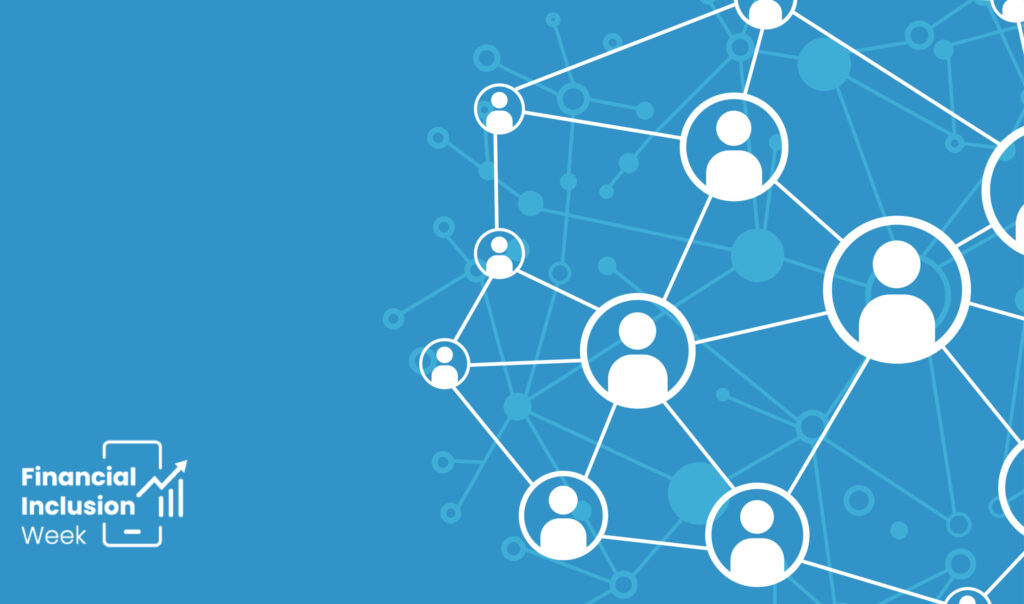
Topic
In 2020, Swiss Re, one of the world’s leading reinsurance companies, emphasized the need for constant dialogue to identify emerging risks and develop solutions that are forward looking. The idea of dialogue is hardly new, and in fact, dates to the ancient Greeks. Logos means “the word” – or the meaning of the word – and dia means “through,” implying that dialogue is the “flow of meaning.” When we are attempting to understand and decipher a complex world with many uncertainties and risks, sharing opinions and listening to how each one deciphers the meaning results in a greater understanding and a better solution.
In March earlier this year, CFI and the International Finance Corporation (IFC) announced the transition of the Responsible Finance Forum (RFF) convening role from IFC to CFI, acknowledging the complexity of the inclusive finance landscape. At the heart of RFF is a need for greater dialogue between multiple stakeholder groups to identify and address risks, and proactively manage opportunities for consumers, regulators, investors, and financial service providers.
Change at Breakneck Speed
The COVID-19 pandemic further accelerated digital adoption and launched a surge in fintech, illuminating the benefits of the quickly changing financial landscape.
The financial system is changing fast. Over the past decade, innovations in digital financial services and the underlying infrastructure, identity systems, and telecom services have enabled financial services to be delivered more efficiently and to new customers through rapidly evolving business models. The COVID-19 pandemic further accelerated digital adoption and launched a surge in fintech, illuminating the benefits of the quickly changing financial landscape to help people access finance remotely. Data from Global Findex 2021 released today shows that about one-third of adults in developing economies that paid digitally in 2021 did so for the first time since the onset of the COVID-19 pandemic.
As a result of these innovations in financial services, many people have gained access to a suite of products and services that help them improve their financial health and access economic opportunities. The latest Global Findex also reports that account ownership globally amongst adults has increased by 50 percent in the decade between 2011 and 2021. As a result, 76 percent of adults today have access to an account with a formal financial institution. Data also shows that the gender gap in account ownership in developing economies has improved, dropping to 6 percent from 9 percent. In 2021 alone, the mobile money industry processed more than USD $1 trillion in transactions, and the number of registered mobile money accounts at 1.35 billion globally was 10 times the number observed in 2012, with activity levels 13 to 15 times higher as compared to 2012.
However, the speed and scale of payment delivery, increased access to easy credit, and the allure of a quick path to wealth through investments in cryptocurrencies are creating a landmine of consumer risks amidst a backdrop of rising debt and falling incomes.
Key Risks Consumers Face
One thing we know for certain is that innovation in financial services is not going to slow down any time soon, and the risks are only going to multiply. CGAP’s research revealed that the number of DFS risks has grown from seven in 2015 to over 60 by 2021. Inclusive finance stakeholders must collectively act now to protect vulnerable consumers from the many types of risks we see.
- Risk of Fraud. Soon after the onset of the pandemic, there was a steep rise in predatory and fraudulent apps. Most of these apps operated in a regulatory grey area and, despite many being blocked on app stores, they relaunched under different names and continue to operate.
- Poorly Designed Redressal Systems. With poorly designed complaints and redressal systems, markets like India saw a spate of consumer complaints on social media, a frequently used informal complaint channel to voice public frustration. Without adequate systems in place, people – especially those most vulnerable who lack access to social media – do not have a place to turn to when something goes wrong with their experiences.
- Exploitative Collection Practices. Exploitative collection practices by digital lenders pose a risk for consumers. In some markets, collection practices hold punitive consequences like incarceration or loss of property when consumers default because legal reform hasn’t occurred. In India, there were media reports of suicide deaths. The Reserve Bank of India set up a working group which released a report in 2021, with recommendations to improve supervision of digital lenders, and has recently started tightening scrutiny.
- Overindebtedness, Hidden Pricing, and Misuse of Data. With digital financial services growing rapidly across the globe, harms to consumers are felt on a larger scale than ever before. The Global Findex 2021 shows that 1 in 5 adults in developing economies who received a wage payment into an account paid unexpected fees on the transaction. In 2019, a report on Kenya showed that rapid growth in mobile credit had been accompanied by cripplingly high default and delinquency. The report also indicated that several digital lenders do not consult or report to credit bureaus as completely or regularly as they should. Pricing continued to be high and confusing to the customer, and there were complaints of fraud, misuse of consumer data, and loan recycling (or “evergreening”) as new loans were taken to repay old ones, creating a vicious cycle of debt.
- Lack of Transparency. The lack of transparency of terms and conditions is a persistent challenge observed globally, despite numerous attempts to address it, either in the form of principles at the time of investment, mandates by regulators, or asking investee companies to endorse client protection principles. All of these methods are necessary but not sufficient, as demonstrated by a global survey of 36 Consumers International members. Transparency was one of the top 4 challenges faced by DFS consumers in 2020. In digital credit, there is a suggested correlation between lack of transparency and default or late repayment of digital loans.
Risks and Challenges Regulators Face
While evidence from Kenya shows that regulation can be a powerful lever to improve transparency and consumer awareness about the cost of loans, regulators and supervisors face significant challenges in ensuring regulation keeps up with the dizzying pace of innovation. Regulators struggle to balance conflicting objectives of encouraging innovation that has the potential to provide better services on the one hand and support inclusion and manage the stability of the financial system and consumer protection on the other.
Yet, even as regulators work to address what lies in their purview, they also must grapple with the rise of decentralized finance, or DeFi. DeFi promises to offer more innovative, inclusive, and transparent financial services with greater efficiency and accessibility; however, it currently lacks any regulation.
How did we get to a crypto-bubble?
The murmurs of a crisis in the crypto financial system are just beginning, but the cost to consumers in emerging markets from this crisis is yet to be estimated. A combination of factors – including the pandemic, political repression, currency controls – and rampant inflation have combined in several markets to fuel the rise of cryptocurrency as an alternate investment option. Nigeria, despite a ban on bitcoin trading, continues to see high demand for cryptocurrency. Research also indicates that since 2021, consumers have reported losing over $1 billion to fraud involving bogus cryptocurrency opportunities.
Regulators also must deal with the risk of cyberattacks and the impact they can have on destabilizing entire nations. We only have to look at Costa Rica, which has been under cyber-siege for over two months, grounding international trade and crucial health systems as staff across organizations have had to resort to pen and paper to keep systems running.
Risks to Investors and Financial Services Providers
Investors and financial services providers are not immune from risks either. With rising complaints about digital lenders and fintechs offering buy now pay later (BNPL) loans, the Reserve Bank of India clamped down on fintech start-ups that were using prepaid instrument (PPI) licenses to offer credit. The Indian fintech industry has attracted over $15 billion in investments from leading global investors and has seen rapid innovation in business models over the last five years. Indonesia’s Financial Services Authority (OJK) has also begun to tighten regulations to increase capital hurdles and strengthen underwriting. In China, we observed increased scrutiny of tech firms like Alibaba and Tencent that threatened monopolistic control of markets.
The governance and regulatory environment must balance innovation, consumer protection, and financial stability so that consumers benefit from the upside of technology-led innovation but are safeguarded from its downsides.
While regulatory intervention is important to achieve consumer protection, tightening regulations that prevent businesses from functioning, or increasing entry barriers can stymie innovation, scare investors, and create challenges for consumers like small merchants who might be relying on the service for their own business. The governance and regulatory environment must balance innovation, consumer protection, and financial stability so that consumers benefit from the upside of technology-led innovation but are safeguarded from its downsides.
Risks Reach Far Beyond Technology and Finance
But this story isn’t just about technology alone. To add further complexity, the financial system is being stressed by multiple external risks. Ensuring a responsible financial system in an age of uncertainty is truly a “wicked problem” – a policy problem that is impossible to solve because of its complexity and interconnected nature with the real world. The war in Ukraine is creating supply shocks; Mayada El-Zoghbi wrote about the potential ripple effects that will be felt by low-income people across the world. CFI’s work on green inclusive finance emphasizes the imperative to think about how inclusive finance can help low-income populations prepare for and respond to climate change.
While we may not have the answers to wicked problems, we know that building a coalition of diverse stakeholders, enabling knowledge sharing, and encouraging collaborative innovation works. RFF was established in 2009 to facilitate such collaboration, and the coalition meets again on June 30 for the first time in two years to reinvigorate these conversations.
The challenges we face are complex and the stakes are high. We hope you will join us on this journey.










